| Place | Oceania: New Guinea1 |
|---|---|
| Accession Number | RELAWM32761 |
| Collection type | Technology |
| Object type | Medical equipment |
| Physical description | Nickel-plated brass, Nickel-plated steel |
| Maker |
H Maki |
| Place made | Japan |
| Date made | c 1939-1945 |
| Conflict |
Second World War, 1939-1945 |
Field Operating Surgical Kit : Japanese Army
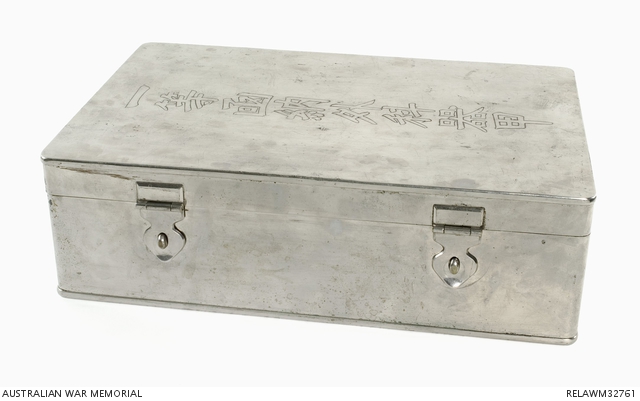

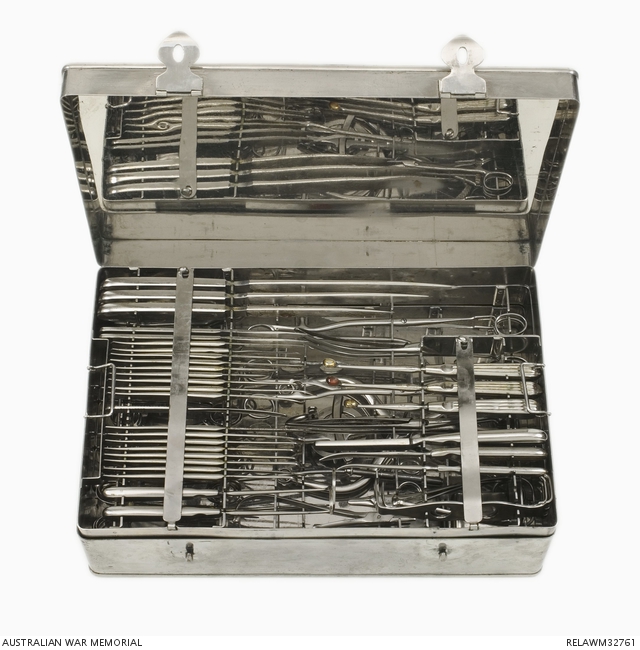
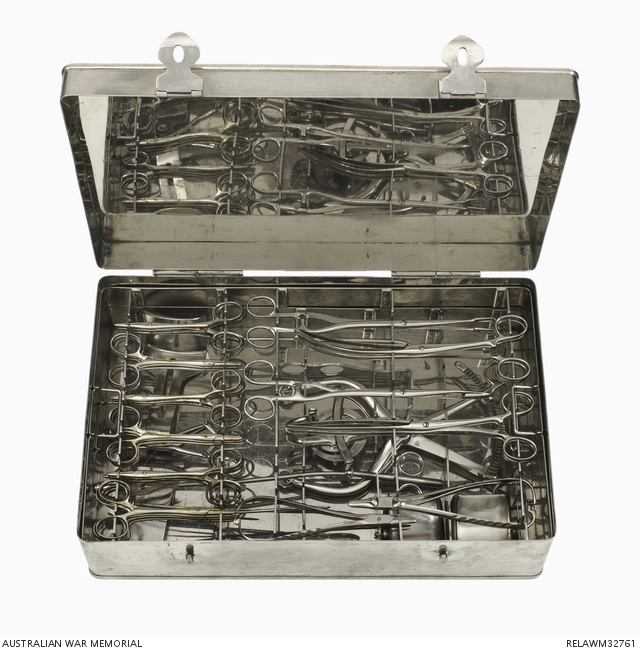
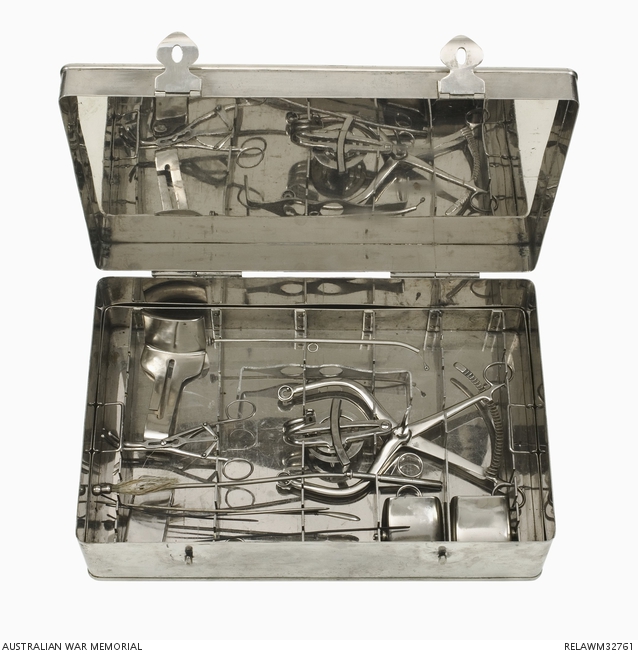
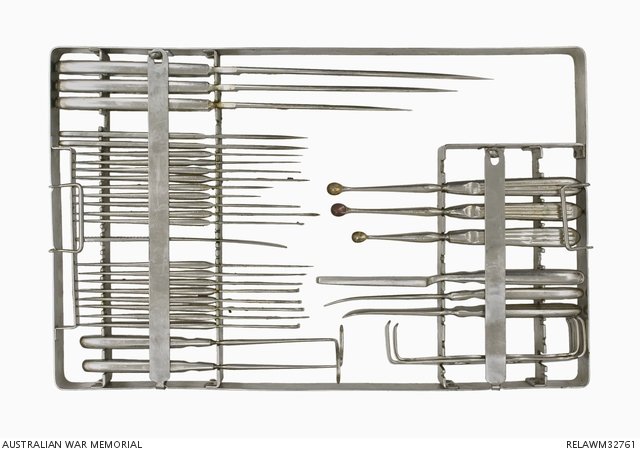
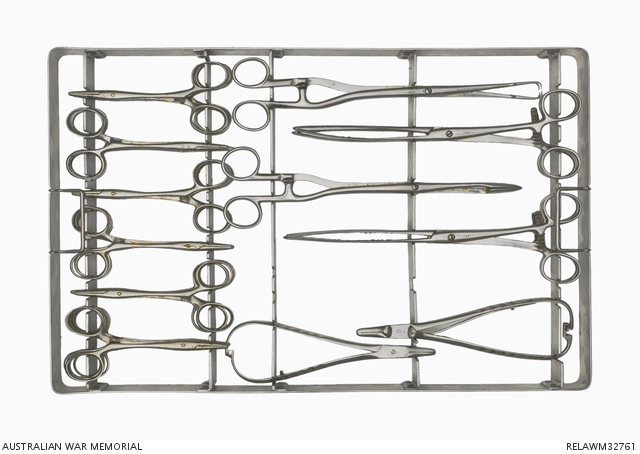

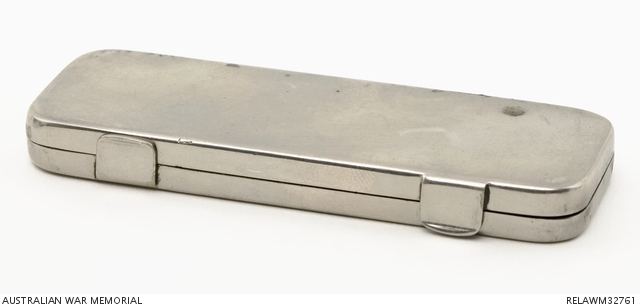

Japanese Army field operating surgical kit consisting of three removable layers of instruments housed in a nickel plated brass case. The hinged lid of the case is fastened by a pair of securing clips. Inscribed on the lid are Japanese characters which can be translated to read ‘First Class Surgical Kit B'. The nickel-plated steel instruments are located in compartments in the three trays, most of the knives, scalpels and curettes being locked in place by metal retaining strips. Each tray has a pair of small drop-down handles to assist lifting, and each of the three trays is apparently designed to hold a different type of instrument. The top tray contains scalpels and amputating knives, curettes, ligature needles, probes, extractors and a rasp. The middle tray holds a variety of types of forceps including dressing and haemostatic, while the bottom tray contains retractors as well as a variety of probes and some forceps. A number of spaces exist in each of the trays for instruments which are no longer present, and a number of items have been fitted into locations for which they were clearly not designed. A small nickel plated brass box which is loose in the bottom of the kit contains a pair of thumb scalpels. Most of the instruments are impressed with the makers' name ‘MAKI' or ‘H. MAKI', but several have other names, including ‘R Nagashima' and ‘C. ZOELLER & Co.' Most have acceptance or proof marks (a Japanese character within a circle) stamped upon their handles. All items in the kit have a coating of protective grease.
Neither the exact location nor the circumstances in which this surgical kit was obtained are known, although it was certainly collected in New Guinea by a member of the RAAF. Previously thought to be a complete and possibly unused set, it is now known to be missing a number of instruments, and others have been replaced with non-original items, including a retractor crudely made from sheet aluminium. There is also evidence of extensive use, including nicks in several of the knife and scalpel blades.